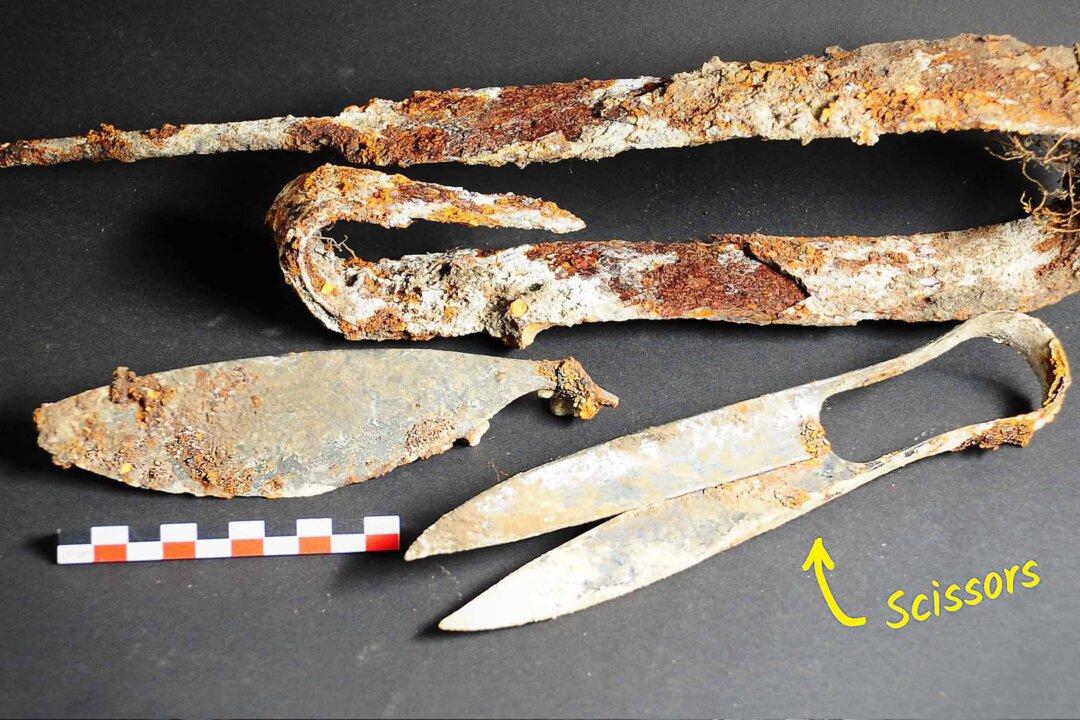A tomb containing a pair of over 2,300-year-old scissors was uncovered by ordinance disposal officers in Germany during a construction project set to move forward in the Sendling district of Munich.
Prepped for handling explosive devices left over from World War II, during an excavation the officers instead found a Celtic grave site containing several metal artifacts—including a pair of ancient, left-handed sheers.






